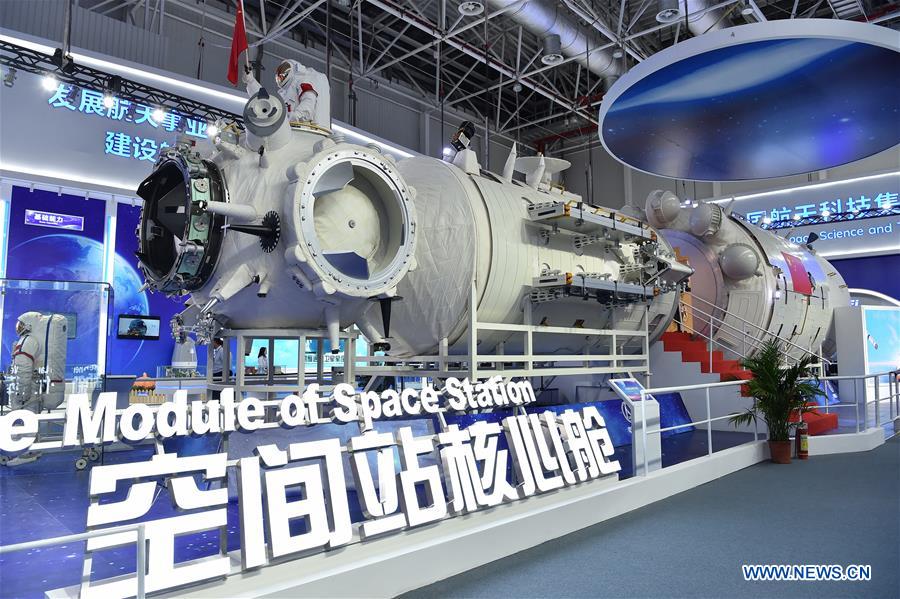Core module of China's space station enters flight model phase
The core module of China's space station has passed comprehensive tests and vacuum thermal tests for its preliminary prototype, and it's currently preparing to start its flight model phase.
The core module of China's space station has passed comprehensive tests and vacuum thermal tests for its preliminary prototype, and it's currently preparing to start its flight model phase.

Photo taken on Nov. 5, 2018 shows a full-size model of the core module of China's space station Tianhe exhibited at the 12th China International Aviation and Aerospace Exhibition (Airshow China) in Zhuhai, south China's Guangdong Province. [Photo/Xinhua]
China's space station is made up of "Tianhe" core module, "Wentian" experiment module I and "Mengtian" experiment model II, with a total weight of over 60 tonnes. The space station can accommodate three people, and is capable of supporting the installation of more than 10 tonnes of equipment load. During its on-orbit operation, the Shenzhou manned spacecraft will provide passenger transportation and the Tianzhou cargo spacecraft offers supply support.
China has also finished the development of its preliminary prototype for the carrier rocket, Long March-5B. It's currently conducting flight product production and engine reliability growth test.
The design life of China's space station is not less than 10 years, but can be expanded through maintenance.
China's space authority and the UN Department for Outer Space launched their first batch of cooperation projects on the application of China's space station last month. Researches on nine projects from 17 countries and 23 utilities will be carried out on the space station, which includes human health during long- term space flight, fluid physics and combustion under microgravity, cosmic observation and new materials.

